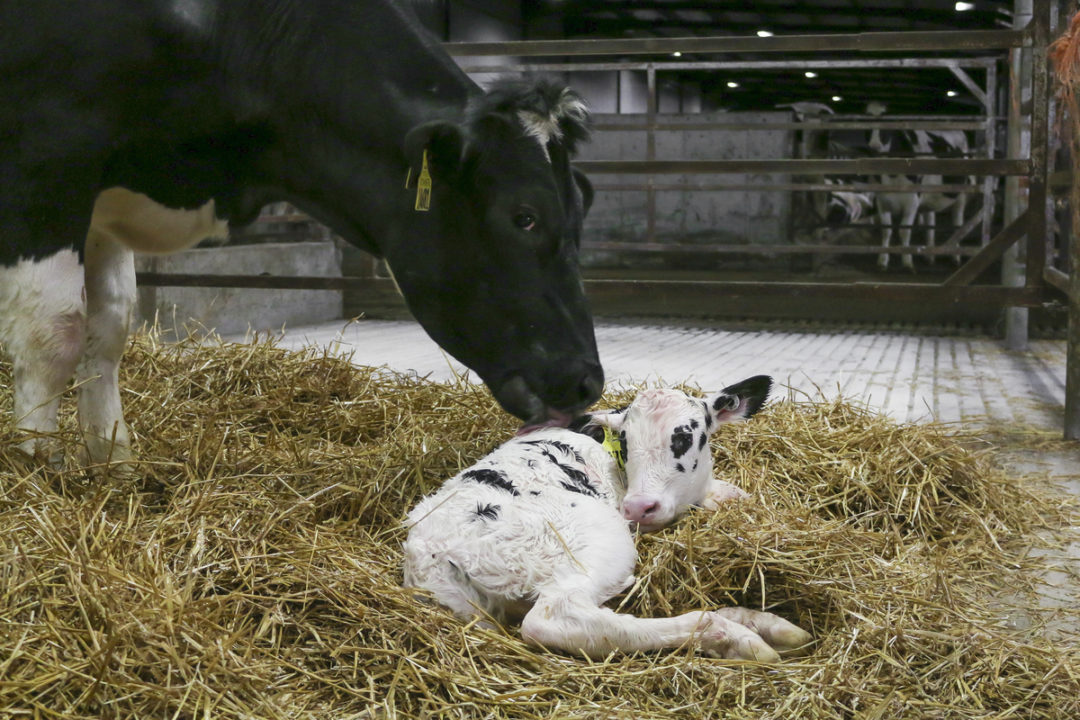“We know that how a transition cow completes her transition period really sets her up for her entire lactation,” Dr. Erin Horst, Ph.D., said as she began her presentation about the Best Practices for Transition Cow Success at the recent Great Lakes Regional Dairy Conference. Horst is a dairy technical consultant with Elanco Animal Health and has recently published “The influence of immune activation on transition cow health and performance – A critical evaluation of traditional dogmas,” in the Journal of Dairy Science with Drs. Sara Kvidera and Lance Baumgard.
Horst pointed to a study that looked at cows that had no disease, a single health event or multiple health events in the first 21 days in milk (DIM).
“It won’t surprise you to see that during that period of clinical disease that those cows produced less milk, but they actually continued to produce less milk all the way across the 14 weeks of lactation,” Horst said. “They were also more likely to leave the herd, so this really goes to show that how we manage our transition cows has a big effect on farm profitability.”
There are several management decisions made from dry-off to early postpartum, and while some of these decisions producers don’t have much influence on, others are managed every day.
“Things like feedbunk management, stocking density, pen moves and lockup times are all really important and we can have influence on,” Horst said.
Feedbunk management
One of the most important aspects on the dairy is feedbunk management and making sure there is enough feed available every day. Just a short period of feed restriction can show a huge decrease in milk production and correlate into a large drop in income. In the first six hours of feed restriction, there is a 20% drop in milk production. On average, that 20% equals a 5-pound drop in milk and translates into a $750 loss on a 1,000-cow dairy with $15-per-hundredweight (cwt) milk. We know that there is more than just a loss of milk, there is also more stress on the cows, and they are more susceptible to disease too, Horst said. When cows are restricted for 12 hours, there will be a 40% drop in milk. Horst said it is ideal to have feed in front of the cows for 23 of the 24 hours in a day.
Feed distribution and push-ups are also important. Because cows are creatures of habit, they will go to the same place to feed every day, which points to the importance of making sure the feed is distributed equally and pushed up often. Refusals should be cleaned every day to prevent toxic build-up and spoilage.
Heat stress
Heat stress is another issue that impacts the herd. Having optimal heat abatement is crucial to keeping milk yields consistent. Shade, air velocity, water and time are four components to keeping cows comfortable and cool.
“We should always be looking at our cow cooling and making sure that it’s working properly,” Horst said.
Are the fans on? Are the fan blades clean? Are the soaker lines properly angled on the cows to make sure they have the best effect? These are all questions that need to be addressed when making sure cow cooling systems are working.
Stocking density
Stocking density seems obvious, but it is also important that the cows have a spot at the feedbunk to eat. When we overstock our cows, it increases direct competitive behavior at the feedbunk and standing time, Horst said. While this is important for all the cows, it is especially important for transition cows.
Ideally, there would be greater than 30 inches of space at the feedbunk per cow, and it would be 80% stocked in the fresh and pre-fresh pens.
“We cannot underestimate the effect that overcrowding has on our animals,” Horst said. “I know we can’t always do something about it, but we can plan ahead. If we are overcrowded this year, what can we do to prevent this in future years?”
Pen moves
Pen moves is another area of concern for transition cows.
“Typically, on most dairies that window of time from dry-off to early after calving, we are going to see at least four pen moves,” Horst said. “We know there are advantages to these moves, and they are positive for the dairy, but we can’t forget with each move there is a period of stress that happens, and it takes cows about 24 hours to adapt to a new environment.”
To minimize the impact of multiple pen moves, it is important to make sure that there is a good reason each time a cow is moved.
“We have to make sure the advantages of that pen move outweigh the disadvantages of the stress that comes with it. When we think about the close-up pen, we ideally want the cows in that pen for at least 14 days to make sure she has time to get over that stress and back to normal before she calves,” Horst said. “In addition to that, ideally, we want to move cow groups once a week. That way there is still time to recover from stress. However, we want to minimize the stay in the maternity pen because the frequency of cattle coming in every day creates a constant state of turmoil. So we really want to avoid long stays in that pen, ideally less than 12 hours.”
Overcrowding in these pens compounds a bad situation with the stress of the move and the lack of adequate space.
“All of these decisions have the potential to impact dry matter intake and to contribute to inflammatory stress, and these are two situations we really want to avoid in the transition period because this will interfere with her success,” Horst said.
These decisions are crucial and impact the herd.
“It’s important to observe, walk the pens, put cameras in the barns, collect data and make decisions from real numbers,” Horst said. “Then bring the influencers into the room, have a discussion and find solutions to make sure the cows are comfortable and stress-free.”







